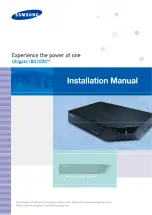
65
SSID (3):
This is the name of wireless router. You can type any
alphanumerical characters here, maximum 32
characters. SSID is used to identify your own wireless
router from others when there are other wireless
routers in the same area. Default SSID is ‘default’, it’s
recommended to change default SSID value to the one
which is meaningful to you, like myhome,
office_room1, etc.
Channel Number (4): Please select a channel from the dropdown list of
‘Channel Number’, available channel numbers are 1 to
13 for European countries, 1 to 11 for USA. You can
choose any channel number you want to use, and
almost all wireless clients can locate the channel
you’re using automatically without any problem.
However, it’s still useful to remember the channel
number you use, some wireless client supports
manual channel number select, and this would help in
certain scenario when there is some radio
communication problem.
Associated Clients (5): Click ‘Show Active Clients’ button, then an “Active
Wireless Client Table” will pop up. You can see the
status of all active wireless stations that are
connecting to the access point.
NOTE: For 802.11b and 802.11g mode, the signals can be transmitted only by
antenna 1 (The antenna in the right side of the rear panel).
For 802.11n mode: The router is operating in a 1T2R Spatial Multiplexing MIMO
configuration. 1 antenna is for signal transmitting and 2 antennas are for
signal receiving.
NOTE: If you don’t have special reason to limit the type of allowed wireless
client, it’s recommended to choose ‘2.4 GHz (B+G+N) to maximize wireless
client compatibility.
















































